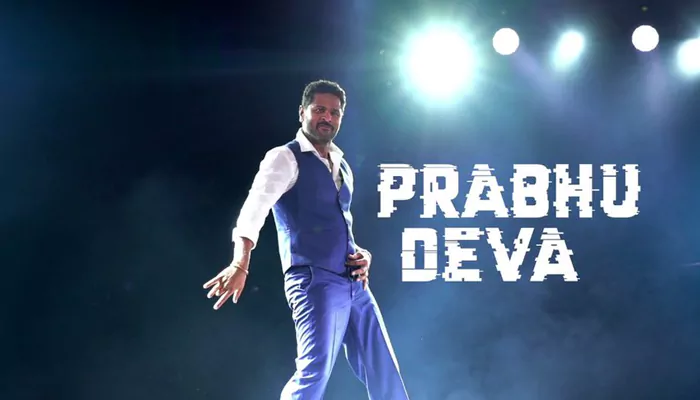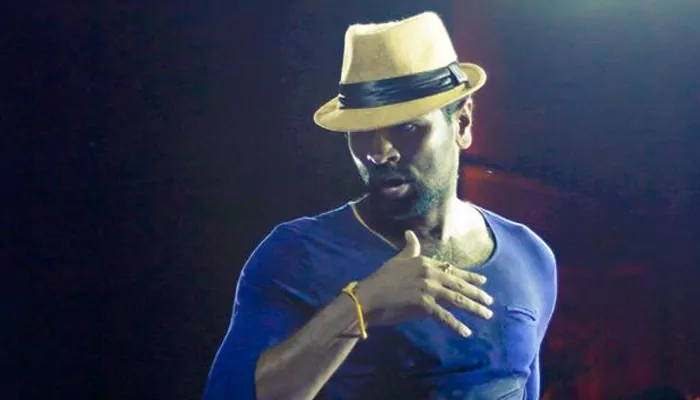
From "Mukkala" to "Go Go Govinda" - let's understand the art (and science) of Prabhu Deva's dance!
There’s a beautiful sher (a short poem) by Azhar Faragh that goes: "Ye Nahin Dekhte Kitni Hai Riyaazat Kis Kii, Log Aasaan Samajh Lete Hain Aasaani Ko." Translated, it means, "They don’t see the effort it takes; people just assume ease comes easily." Honestly, this sums up Prabhu Deva’s dance perfectly. When we watch him, it looks so effortless, like he is simply enjoying the music, moving with the beat, and having fun. Of course, he is born talented with an almost supernatural sense of rhythm. But that’s just the surface. What we don’t see is the insane passion, the endless dedication, the unmatched discipline, and obviously the countless hours spent perfecting every single move. It’s pure magic—and that’s why, when he dances, we can’t take our eyes off him, not for even a second. And even though he famously said in ABCD, "Anybody Can Dance," we know that no one can quite match his standard.
(Credit: prabhudevaofficial)
Born on April 3, 1973, Prabhu Deva has gifted us numerous iconic dance numbers - from "Mukkala Mukkala" to "Urvashi" to "Kya Sera Sera" to "Go Go Govinda" to "ABCD" to "Guleba" and more. Today, as we celebrate his 52nd birthday, let's analyze his dance moves and understand what makes them so unique.
Prabhu Deva’s dance style is a stunning fusion of classical Indian moves and contemporary Western. Trained in Bharatnatyam, his classical roots shine through in his footwork, precise hand gestures (mudras), and graceful postures. But what truly sets him apart is how he blends these traditional elements with the sharp, electrifying movements of modern dance, heavily inspired by Michael Jackson. In tracks like "Muqabala Muqabala", he incorporates mudras like pataka (flag) and tripataka (three parts of a flag) to convey emotion, while his moonwalk, body isolations, and swift movements make it stylish. This fusion is even more apparent in "Urvasi Urvasi", where he combines fluid arm motions with rhythmic footwork, and in "Go Go Govinda," where he mixes Bharatanatyam-inspired mudras with contemporary hip-hop isolations and rapid body waves.

Deva’s ability to switch between these two worlds creates a dynamic flow that feels both innovative and rooted in culture, leaving a lasting impression on our minds.
A sense of rhythm and timing is a natural gift that Prabhu Deva was born with and then perfected through endless practice. To put it simply, rhythm in dance isn’t just about moving with the beat, but also about syncing your body with the music in a way that feels exciting and looks effortless. Needless to say, Deva does this flawlessly. And his timing is impeccable, allowing him to play with the music in a way that adds energy to every move. Take "Muqabala Muqabala" for example, where his lightning-fast footwork perfectly matches the beat, while his upper body remains smooth and controlled. What's even more interesting is how he switches between fast and slow movements, and that too without missing a single beat. In "Urvasi Urvasi", his spins and jumps show how he stays on point with the rhythm, making every twist and turn look natural yet in sync with the music. "Ithu Kaadhal Kaatchi" is another great example of that, which keeps audiences at the edge of their seats.
(Credit: Ishtar Music)
In a nutshell, Deva's rhythm and timing are all about making each movement feel like it belongs in the exact moment, giving his dances an unpredictable, yet perfectly timed energy.
Wayne W. Dyer once said, “It is the space between the notes that makes the music. Without that emptiness, that silence in between, there is no music, only a noise.” What he really pointed to is the importance of breathing space, which makes everything else more impactful. In painting or photography, it's the empty space within the frame that helps the subject stand out. In acting, it's the pauses between words that create more impact. Similarly, in dance, the pauses between the movements, the moments of stillness during the transition, and specifically how the dancer interacts with the space around them make all the difference.

Prabhu Deva is a master at using space in this way. Amidst all those high-energy movements, he also knows when to pause and let the space breathe. In "Muqabala Muqabala", his body almost seems to command the space as he leaps and twirls, but when he takes a brief pause (which you may not notice particularly), the stillness amplifies the next movement and makes it more striking. In "Urvasi Urvasi", he uses the space between his spins and jumps to build anticipation, giving the audience time to absorb the power of his next move. It not only enhances his timing but elevates the emotional impact of his performances to a whole new level.
(Credit: Ishtar Music)
And it's not just about his own performances. When he choreographs, he ensures that every bit of space is utilized effectively. Just watch Hrithik Roshan in "Main Aisa Kyun Hoon" ('Lakshya'), and you'll understand.
When Prabhu Deva dances, it's not simply a sequence of steps or a display of skills. It's storytelling at its best, with emotions, narratives, and moments through every move. His high-energy, incredible fluidity, and nuanced expressions come together to create stories that engage us throughout. For example, the footwork in "Muqabala Muqabala" isn’t just for the sake of speed – it’s a reflection of the excitement and intensity of the moment. His sharp, quick movements tell a story of confidence and power, each step building on the last, and leading to the next. Moving from rapid footwork to a graceful, controlled gesture - as commonly seen in all his performances - enhances the emotional weight of the piece. It’s not really about how fast he can move; it’s about how smoothly the story unfolds through the flow of his body. Similarly, in "Urvasi Urvasi", the fluid arm movements express the playfulness, flirtation, and charm of his character. His facial expressions strengthen the narrative, while his eyes and smile convey emotions that words can never do.
President Kovind presents Padma Shri to Shri Prabhu Deva for Art. A choreographer, film director, producer and actor, he has worked in Tamil, Telugu, Hindi, Malayalam and Kannada films. In a career spanning 25 years, he has performed and designed a wide range of dancing styles pic.twitter.com/fb57dGJ7m1
— President of India (@rashtrapatibhvn) March 11, 2019
President Kovind presents Padma Shri to Shri Prabhu Deva for Art. A choreographer, film director, producer and actor, he has worked in Tamil, Telugu, Hindi, Malayalam and Kannada films. In a career spanning 25 years, he has performed and designed a wide range of dancing styles pic.twitter.com/fb57dGJ7m1
— President of India (@rashtrapatibhvn) March 11, 2019
(Credit: President of India)
Well, I hate it when people say, "Oh, he's a natural" or "he’s God-gifted". Yes, talent helps and is the foundation, but it's the endless hours of practice, dedication, and hard work that take it to the next level. Prabhu Deva’s dance is a perfect example of that. His brilliance shows in the meticulous effort he puts into every move. And he enjoys every moment of it, bringing a sense of joy to his numbers, making it impossible for us not to be drawn into his world.